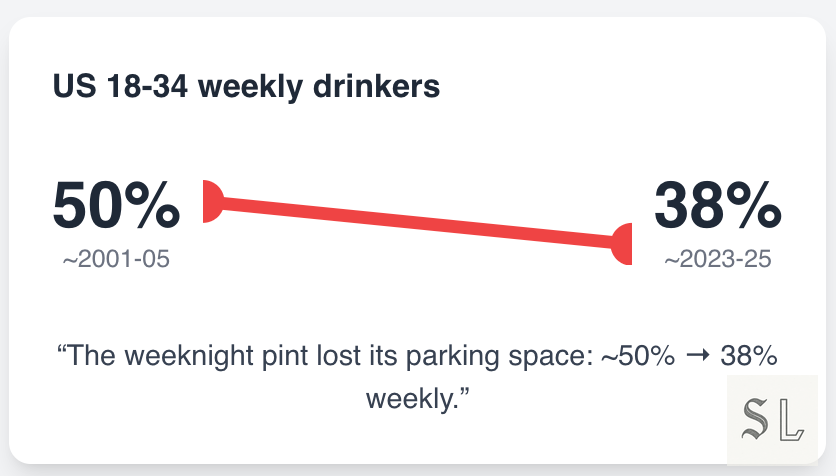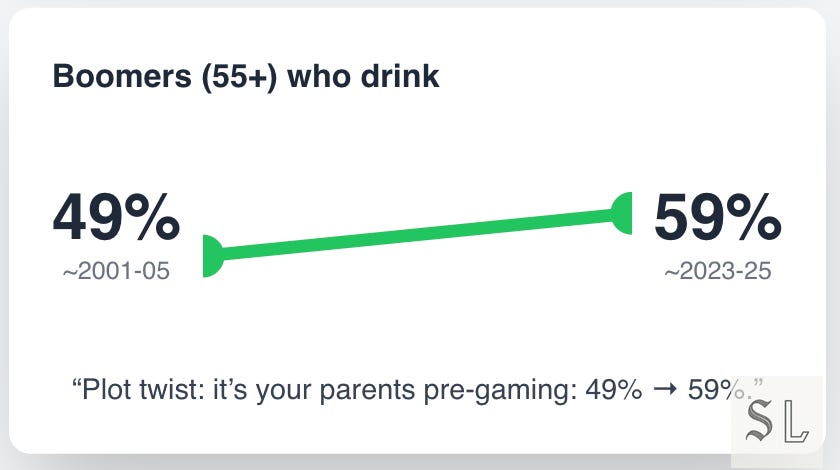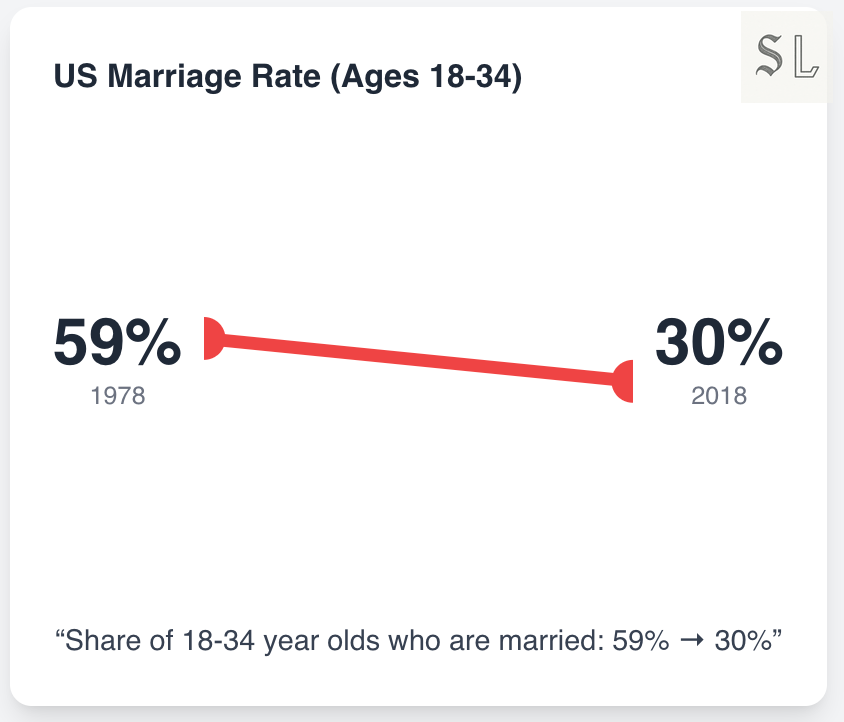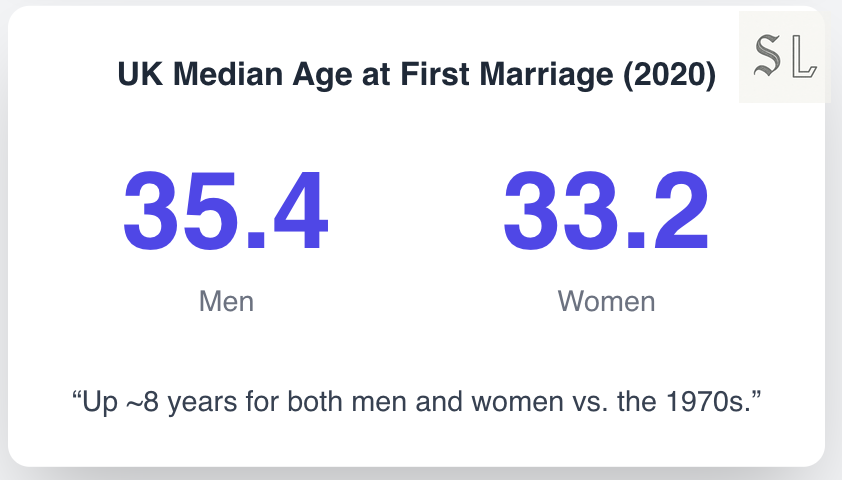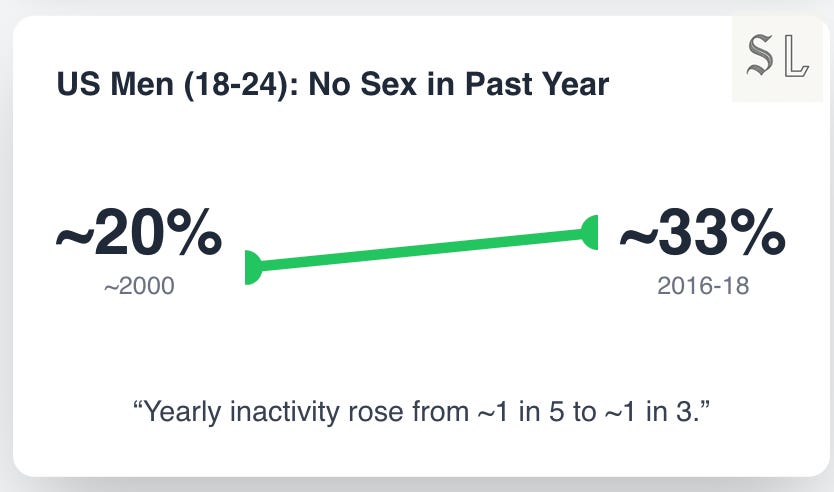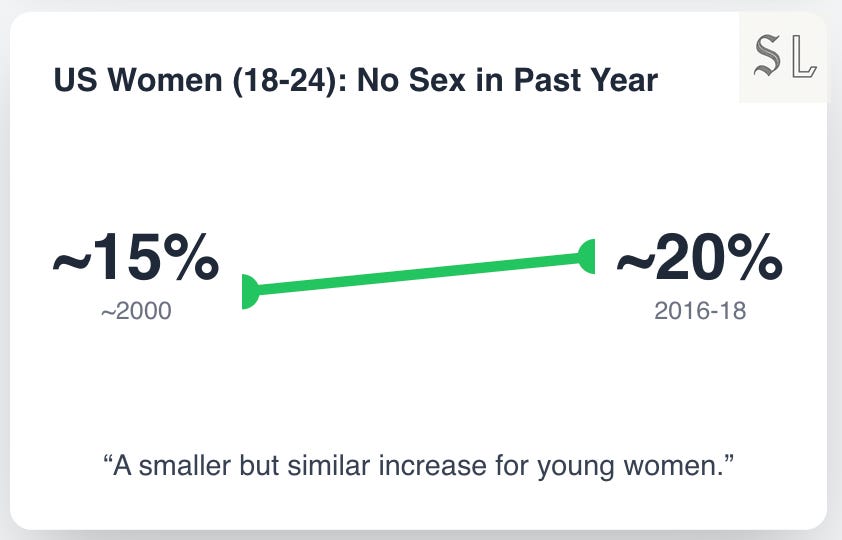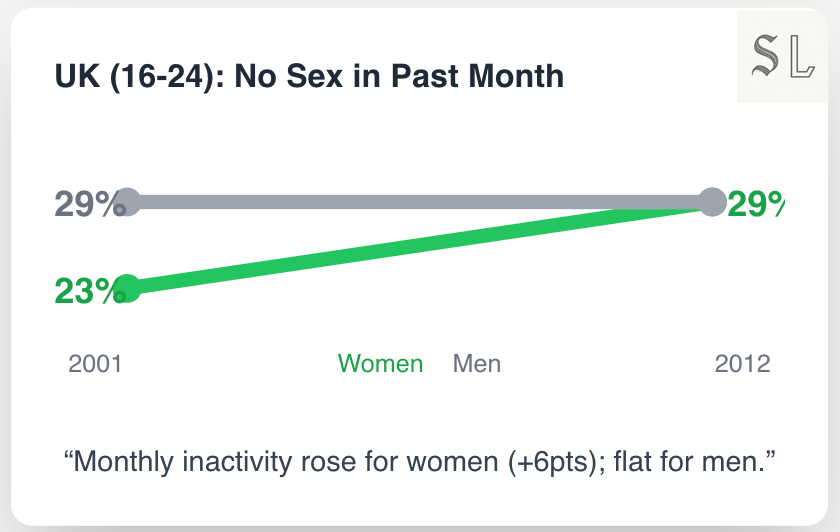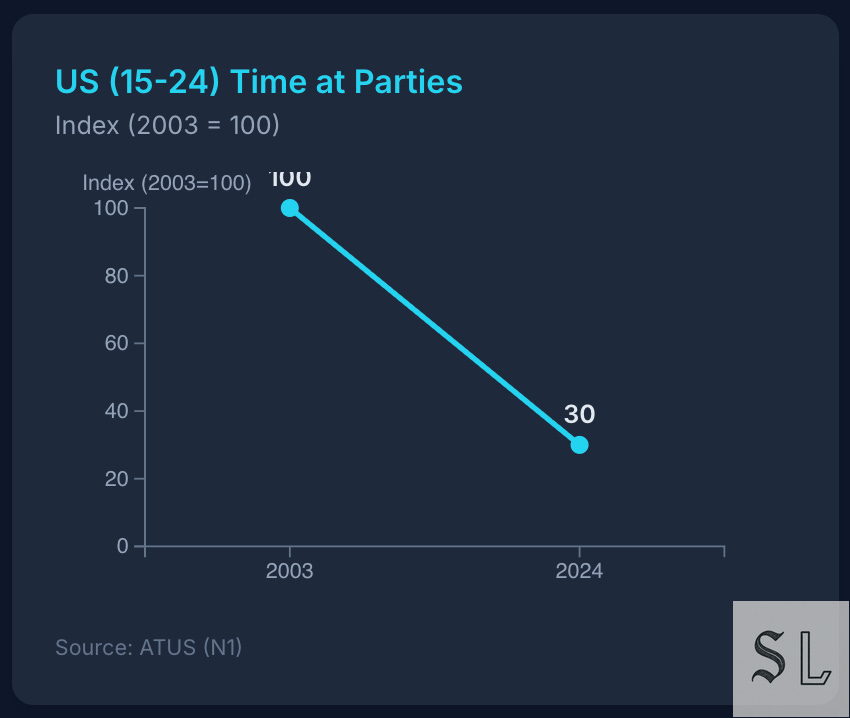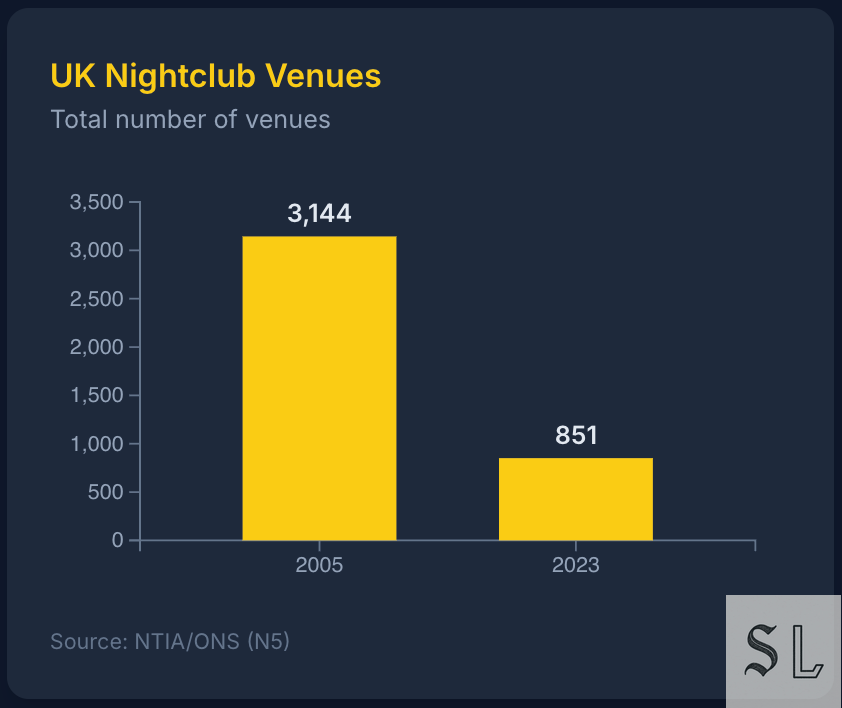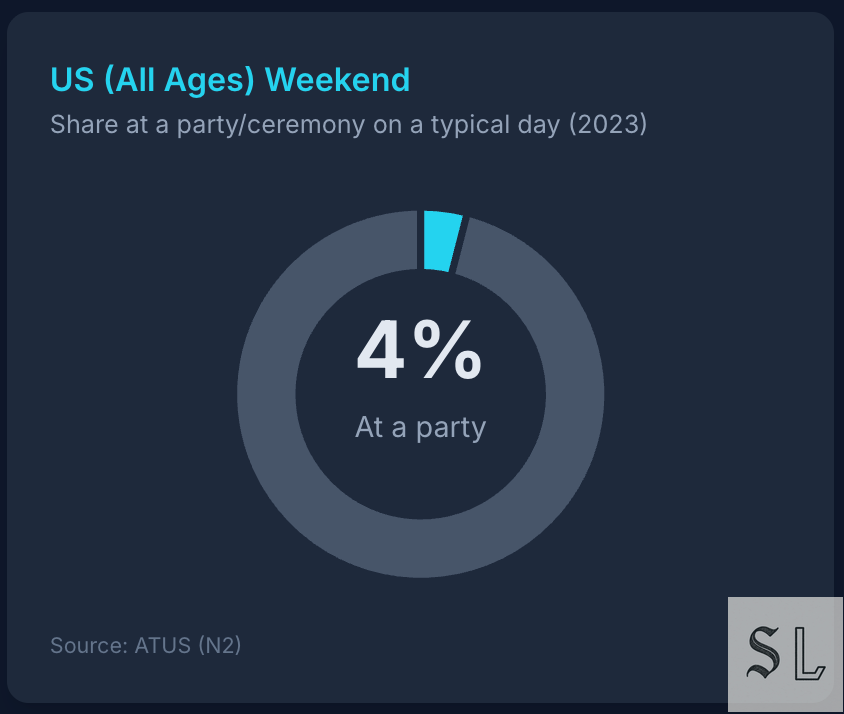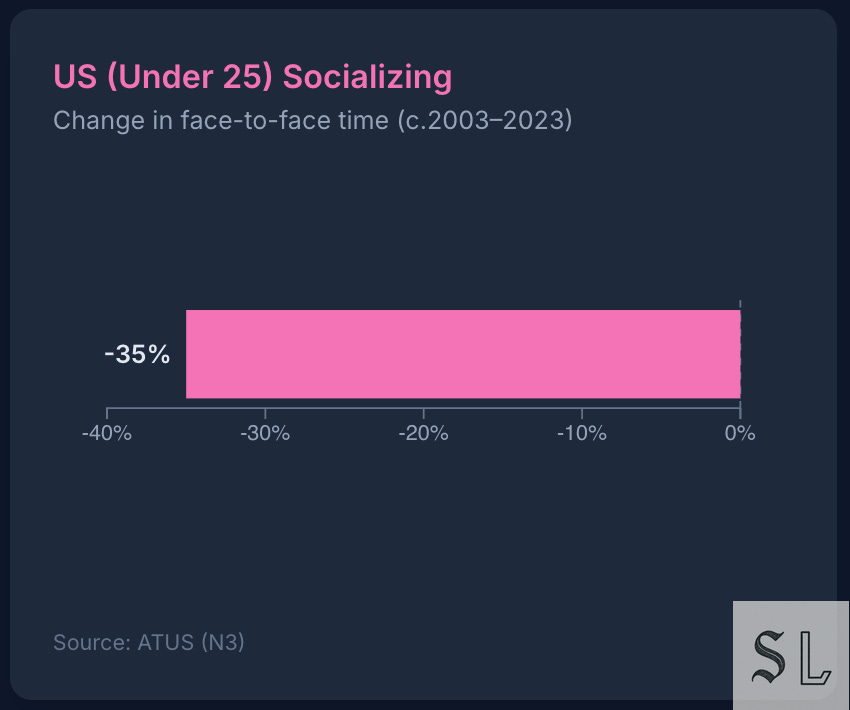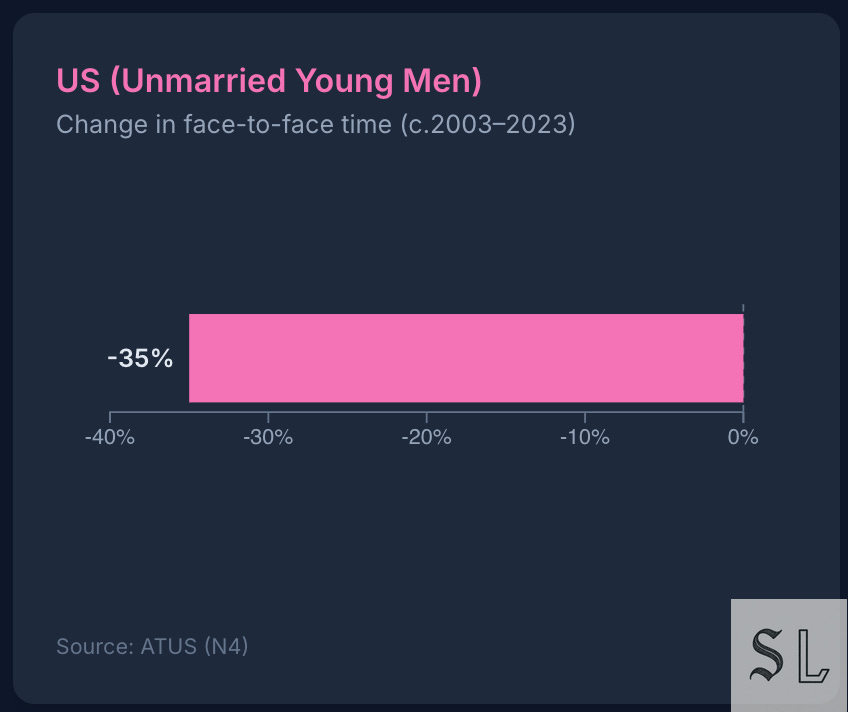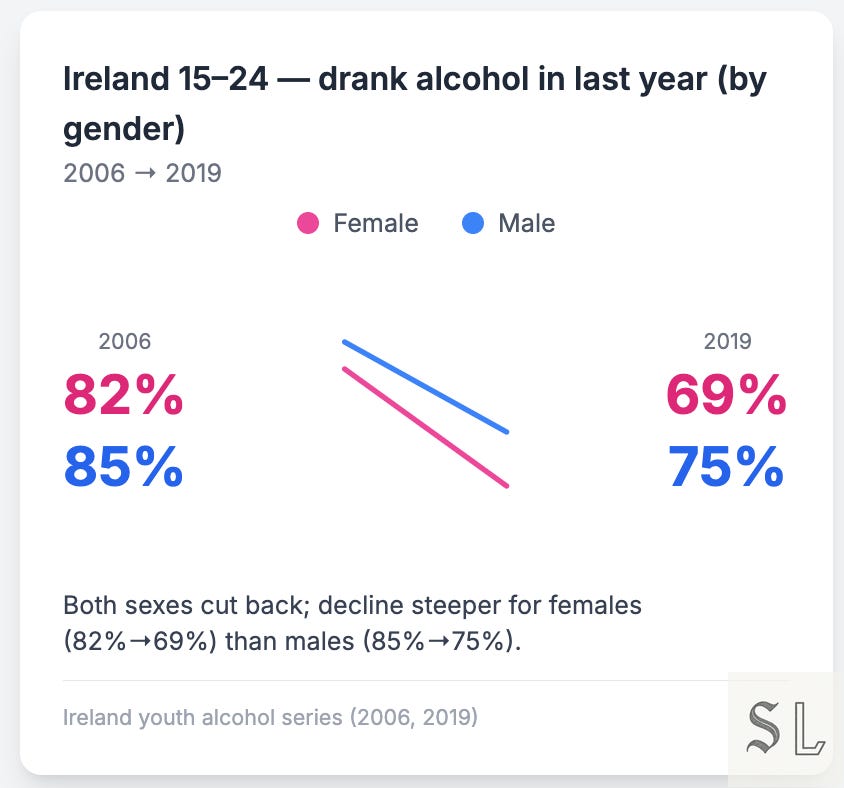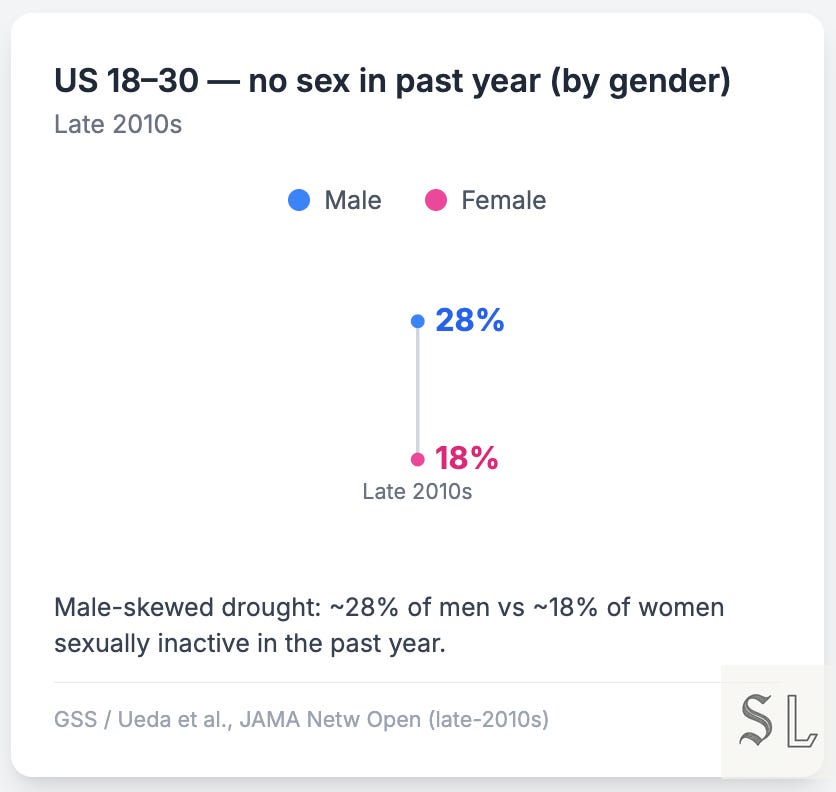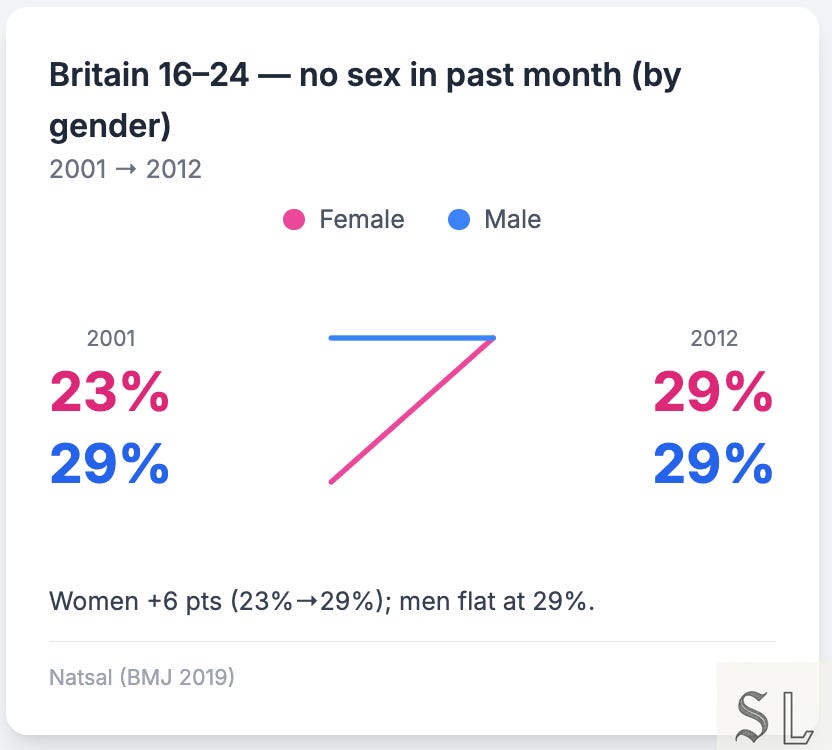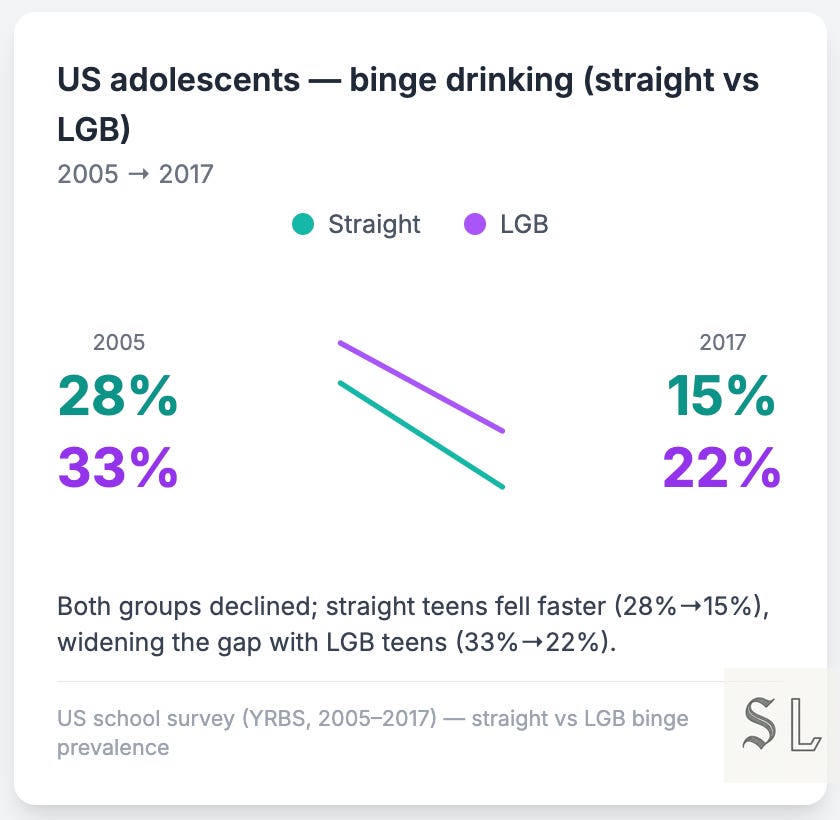Gen Z and The Business of Sex, Drugs, and Rock & Roll
Less binge, later pairing, more planning. Gen Z didn’t kill fun, they rescheduled it. Alcohol, sex and nightlife all run on new rules.
On Fridays the bouncer outside the club reads last year’s messages. The queue never quite forms; a few friends take a photo under the sign and drift to the night bus with plastic cups of something low-ABV. Inside, the lights do their duty, looping over a crowd of thirty-somethings and two women in their fifties who have discovered spritzes and solidarity. At the end of the bar a twenty-four-year-old orders the one immaculate martini she allows herself, stirs it with a kind of reverence and checks her sleep score because superstition is cheaper than regret.
If you were to believe the headlines, this is abstinence with better shoes. It isn’t. The calendar moved. The weekly drip that used to carry the city thinned and in its place, engineered peaks take centre stage. Festivals, arena tours, the birthday you book three months out… those are the new scaffolds. The in-between is quieter, on purpose. The heavy usage crowd cooled, and somewhere along the decade the age order flipped, leaving the loudest table to people who remember dial-up and are enjoying themselves hugely.
Intimacy learned the same tricks. Apps promise introductions in every pocket, but the endings are still decided by rent, buses, shifts and nerves. The city is a maze that rewards stability: a spare room, a late train, a friend who can collect you if the date goes wrong. When those pieces misalign, ordinary closeness becomes expensive. Women route around it with care, LGBTQ+ kids learn new maps, and a slice of young men fall out of the game entirely and don’t quite know how to climb back in. It reads like prudery from a distance, but up close it’s a lot of logistics; fewer built-in chances, more planning permission.
Nightlife followed suit. The room you went to every week is now a memory on Instagram, and the room you go to twice a year sells out in minutes. Neighbourhood venues count the empty hours between bursts and make peace with the math. Screens stole the ambient social time that used to pad the week. A lot of friendship now happens in text, with perfectly good jokes and fewer taxis. In the gaps, substitutes flourished: cannabis, vapes, caffeine, competence. The pharmacy on the bathroom shelf is a quiet coalition partner. So is the wrist that tells you how badly you slept.
None of this is a morality play. It’s a cohort story with period noise: prices that make nights feel special, a pandemic that closed the circuit and reopened it unevenly, and a slow migration of status from excess to control. The city did not sober up, just learned to schedule. The averages look stern because averages always do. The nights, when they come, are still loud enough to rattle a few windows and reassure a few parents that the old world isn’t gone, just rationed.
Read the room: fun didn’t die, but it did change the terms. Fewer rituals, bigger moments, stricter budgets. The kids moderated while their parents discovered Aperol and became unreliable witnesses.
Today we’re going into the machinery underneath that shift.
Part II, ahead, will take it apart properly: the substitutions that stole hours, the logistics that gate intimacy, the split scenes that keep some people home, the wellness codes that rewarded control, and the little stack of chems and chips that helped nudge behaviour there.
For now, hold the picture in your head: a bouncer scrolling; a perfect martini; a spritz held like a souvenir; the quiet that sits, deliberately, between the peaks.
Today We’re Talking About
You’re timing youth culture wrong. Weekly outings fell but big events (festivals, tours, planned blowouts) carry the load. If your beat is Fridays, you’re missing the story.
Sex didn’t go puritan, it hit red tape. Apps match interest but a ton of other things decide outcomes. The “sex recession” is logistics, not morality.
The drinking script flipped. The heaviest drinkers are Boomers now. Twenty-somethings treat control as status and hangovers as unforced errors.
The “average Gen Z” is a statistical ghost. It’s a two-speed cohort: an active core, a dialled-down middle, and a disconnected tail (male-skewed), bent further by sexual orientation, education and stability.
Shocks made noise; the baseline shifted. COVID and costs deepened troughs and produced loud rebounds, but we didn’t rewind to 2005. Expect pockets of rowdy peaks on top of a calmer routine.
Let’s get to it.
Alcohol isn’t default any more
On a Friday, the twenty-four-year-old at the bar orders one nogroni and checks tomorrow’s calendar. At the other end a fifty-something raises a second spritz and tells the room he’s earned it. That’s the pivot in a snapshot. The weekly pour has stopped being automatic and while the habit drained away, the occasion stayed.
This is not Dry January cosplay. Fewer young people start, those who do start drink less often and less heavily, and routine pints lost their slot to planned occasions. That’s why your Friday looks quiet and your festival looks feral: the cadence changed.
Routine lost to occasion. From habit to treat. One immaculate martini, early cab, smug sleep score.
Even the chaos crew cut back. The boring public-health miracle that ruins memoirs.
Plot twist: The kids moderated while your parents took a different path. The age curve inverted, which is why family holidays are louder.
Not puritans. 1 in 4 young Britons don’t drink because the product-market fit changed: friends, vibe, and an Uber home they’ll remember.
Sex and Partnering Rewired
On the screen there are matches by the dozen, but in the flat there’s a housemate, a thin door and an early shift. The last train leaves before the bill arrives. You can route desire through an app, but you still need a bed, a bus, a free evening and a feeling of safety. The city keeps a quiet tax on ordinary closeness, and the single years stretch.
But it’s not just about singles. The default couple life slipped later, so the built-in chances thinned. The disconnect skews male, off the pitch and not sure how to rejoin, while women and LGBTQ+ cohorts map different routes through the same maze.
Marriage didn’t “slip”; it halved. The default 20-something script (ring + lease) became a minority outcome.
Cohort effect in one glance: 1990s-born young adults were 2.5× more likely to reach 20–24 without a single partner than 1960s cohorts. That’s not late blooming.
We added ~8 years to the starting line. Stretch the single decade and the alcohol-centred rituals and “default couple sex” shrink with it.
From 1 in 5 to ~1 in 3 (men). A large slice of young men left the field entirely; less dating, more isolation; the active minority carries most of the action.
Smaller rise, same direction (women). Women remain more likely to be paired, which is why the gender gap drives so much of the “sex recession” story.
UK frequency tells on relationships. Men flat at ~29% monthly inactivity; women up 23% → 29%. Frequent sex fell first inside relationships; casual spikes didn’t rescue the average.
Nightlife, New Tempo
Most weeks slide past without a line outside anywhere. Plans live in DMs and living rooms. The big nights are already circled, paid for, and rationed. The old habit of popping out “just because” withered and what remains is the booked-ahead blowout and the long quiet stretch that follows.
When the rhythm shifts, everything else does. Zero-proof lists get longer. Small rooms on the high street scrape by between bursts. The premium tier is a ticketed spectacle with merch, confetti and a commute. Home wins the tie-break: cheap, safe, decent sound, friends on tap.
Party time collapsed. ~70% down since 2003; “out” became an exception, not a habit.
Supply matched demand. A roughly three-quarter cull of UK clubs since 2005; fewer weekly dance floors, more one-offs.
Not a lockdown hangover. It’s cost, safety, screens, decent coffee, and next-day competence. Saturday now comes with slippers.
24 in 25 Americans aren’t at a party on a typical weekend day. Peaks, not plumbing.
Offline time fell by ~⅓. Screens ate ambient socialising; chance drinks and chance encounters shrank with it.
Mind the male skew. Less in-person time maps to the sexlessness gap and thinner friendship nets. If you want fewer problems later, give the lads more places to be.
The two-speed generation
But, here’s the thing: the averages lie. Zoom in and you get two very different youth realities.
Gender
Women are setting the speed limit. They’ve stepped back from alcohol faster (UK and Irish trends show the sharper drop) and teenage girls in England have almost caught boys on not drinking at all. Bingeing fell on both sides, but the last stubborn outliers are mostly male.
The dry spell in sex is concentrated among men. By the late 2010s, roughly a third of American men aged 18–30 reported a dry year, versus about a fifth of women. In Britain, the steepest fall in sexual frequency shows up inside older or married couples; 16–24 men are flat, which is to say they started lower and stayed there.
Said another way, women are driving the moderation without disappearing from the dating pool and a meaningful slice of young men has drifted to the margins.
Sexual orientation
Moderation reached everyone, just not at the same clip. Straight teenagers eased off fastest, so the binge gap widened even as both sides sank. By their twenties, gay and bi men are more likely to clock long dry spells than straight men; lesbian and bi women sit closer to straight women.
Queer bars and clubs still double as civic rooms, which softened the fall in in-person nights even as the swipe handled the cold open. The steps from match to doorstep come with different hazards: minority stress, fewer reliably safe spaces, scenes shuttered or priced out, and the roulette of location-based apps. Not a “Grindr tax” so much as extra tolls along the way.
Samples are smaller, but the direction is steady. The story here isn’t simply one of appetite but also one of access.
Both lines fall. Straight teens drop 28%→15%. LGB teens drop 33%→22%. The gap widens because straight kids cut back faster. Read: the moderation wave reached everyone, just not at the same speed — queer youth still face different pressures and venues, so the tail lingers.
Here the gap is clear: LGB ≈18.6% vs straight ≈13% report a dry year. Call it environment and logistics — minority stress, scene closures, app roulette. Not a “Grindr tax”, exactly, but the path to partnered sex is rougher. Small-N, direction holds.
Orientation barely moves the needle here. Both sit around ~10%. The drought isn’t about identity; it’s about the new script (later partnering, meds, scheduling, vibes). Small-N caveat, same story either way.
Education and class
A degree doesn’t guarantee a love life. Sexlessness rose on both sides of the mortarboard. The gap widened because stability, not credentials, does the heavy lifting. For young men, being in school, between jobs or on thin wages roughly triples the odds of a blank year. Term time, shift rotas and overdrafts beat bravado every time.
Marriage has gone premium. It arrives later for everyone and concentrates among the credentialed, with the steepest long-run declines at the non-degree end. That leaves more twenty-somethings outside cohabiting arrangements, especially working-class men, orbiting relationships rather than living inside them.



